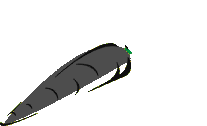The
unripe fruit is sometimes dried in the oven and eaten like bread.
When dried it may be kept for a long time without spoiling and can
be carried on a long journey.
Millet is a seed that looks like grains of sand. It is boiled like
rice, or pounded to make into coarse flour for porridges. Women grind
the millet into flour in the traditional fashion using a small heavy
rock.
Visit
a health food store and purchase some cereals. Have a go at pounding
them to make your own flour. Use this flour to make some pancakes
or scones.
Peanuts
- also known as groundnuts or monkey nuts. These play an important
part in the diet of people in Uganda as they contain valuable protein,
fat and carbohydrates.
Peanuts originally came from South America. Portuguese sailors took
them across the seas to Africa in the 16th century. The seeds are
planted in rows. The yellow flowers turn into brown pods, each containing
one or two nuts. The pods turn down into the ground and bury themselves
beneath the surface, hence the name 'Groundnuts'. They are dug up
at harvest time, when some are kept for seed, some for cooking, some
for making into vegetable oil and the rest sold. Each nut contains
between 40% and 50% of oil and is used in margarine, ice cream and
sweets.
The peanut will need plenty of warmth (not less than 21° C) to encourage
germination and then the pot can be placed on a warm, sunny window
sill for the plant to complete its life cycle.
Make sure the peanuts are not the roasted variety. They can be shelled
or remain in their shell. If the latter, crack the shell across the
middle to let in the moisture.
-
Put
some soilless potting compost into a fairly large plant pot.
-
Plant
peanuts in groups two centimetres deep. They can be thinned out
later.
-
Cover
the pot with polythene and place above a radiator or in an airing
cupboard for around two to three weeks.
-
Once
sprouted, keep in full light in a warm place. It is important
to keep the plant moist.
The best time for planting is March or April so that the peanut can
take advantage of the warm, light summer days. As it begins to grow,
the peanut looks like a large clover. It will produce yellow flowers
during the summer followed by the seed pods. These are pushed down
below the surface where they develop into the nut we all know.
-
Grind
some roasted peanuts in a blender.
-
Add
some vegetable oil if needed.
-
Add
salt to taste and put into a jar.
Mix
together two cups of cooked rice with two cups of ground peanuts.
Beat together three eggs with one and a half cups of milk and add
to the rice mixture. Season with salt and pepper. Pour into a greased
loaf tin and bake in a moderate oven until it springs back to the
touch. Ice the top with cream cheese and a little icing sugar when
cool.





